The IoT market within finance is expected to triple by 2020.
However, with the rising popularity of the Internet of Things (IoT) and Big Data, banks and insurance firms must prepare themselves for a new wave of security challenges.

The IoT market within finance is expected to triple by 2020.
However, with the rising popularity of the Internet of Things (IoT) and Big Data, banks and insurance firms must prepare themselves for a new wave of security challenges.
Despite the reluctance of businesses to embrace new ways of working, it is refreshing to see that cloud computing [and hybrid cloud,] has seemingly entered the mainstream of digital transformation.
Whilst this transition has moved beyond the mind-set of a ‘private cloud only environment’, we are now faced with another choice:
Microsoft Azure vs AWS.
However, while these two are continually compared in a manner that suggest there must be one leading horse - the reality is different. In fact, we actually have the fortune of selecting the most attractive features from each provider, to enable a multi-cloud strategy.
As such, this guide will compare the two leading cloud providers [AWS and Azure] and assess their strengths and weaknesses. This includes pricing, features, development and more.
In view of clarifying the wealth of press coverage this battle gets, it’s important to first understand why the current market has created this [arguable] duopoly.
Firstly, you have to examine the role played by cloud adoption.
As the following graph shows, the benefits of cloud computing stretch across various different levels of decision making. Whether that be through comforting CFOs with operational cost savings, to delighting CTOs with the ability to deliver products at scale.
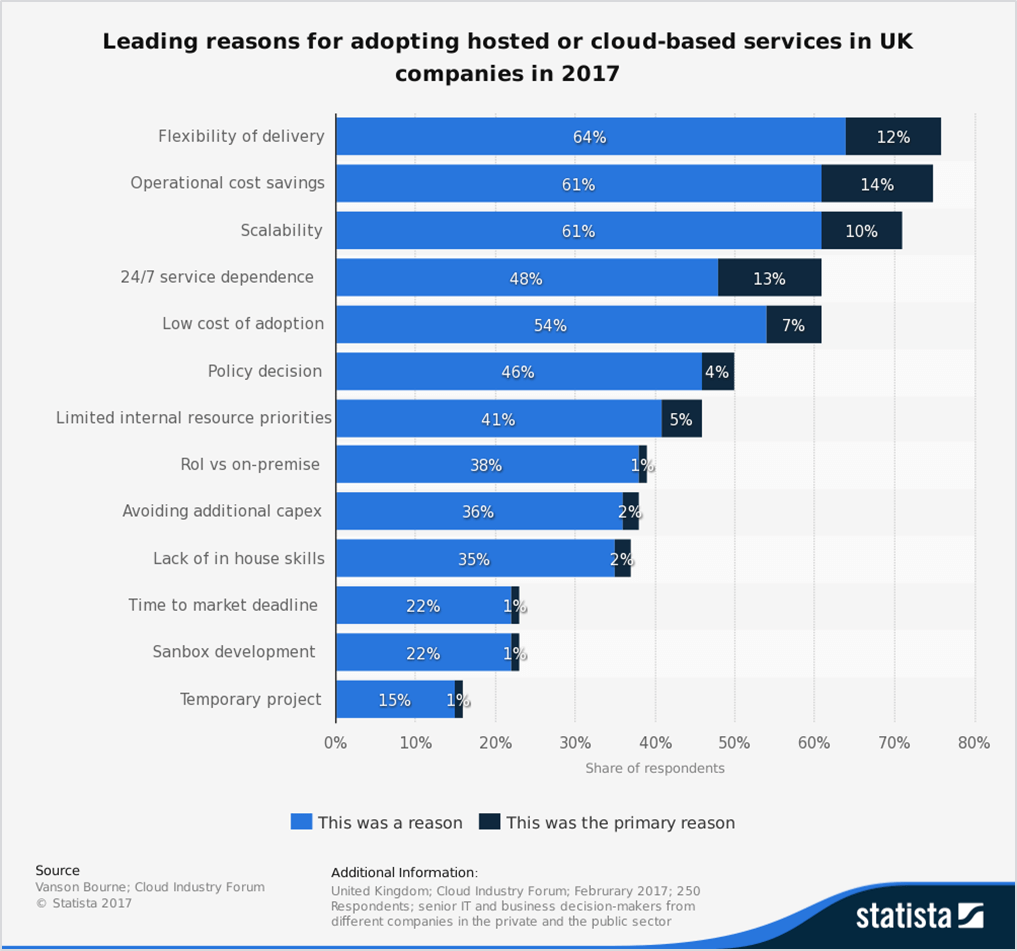
It is interesting to note that the matter of board buy-in is critical. Whereby, many past technologies failed to inspire all organisational functions to act – as such, they didn’t.
But here’s the kicker:
The fast rate of cloud adoption has meant that organisations are continually in fear of competitive disadvantage, thus compelling them to not fall behind.
Following on from the matter of adoption, there is a suitably large amount of hype surrounding the need for a digital transformation strategy.
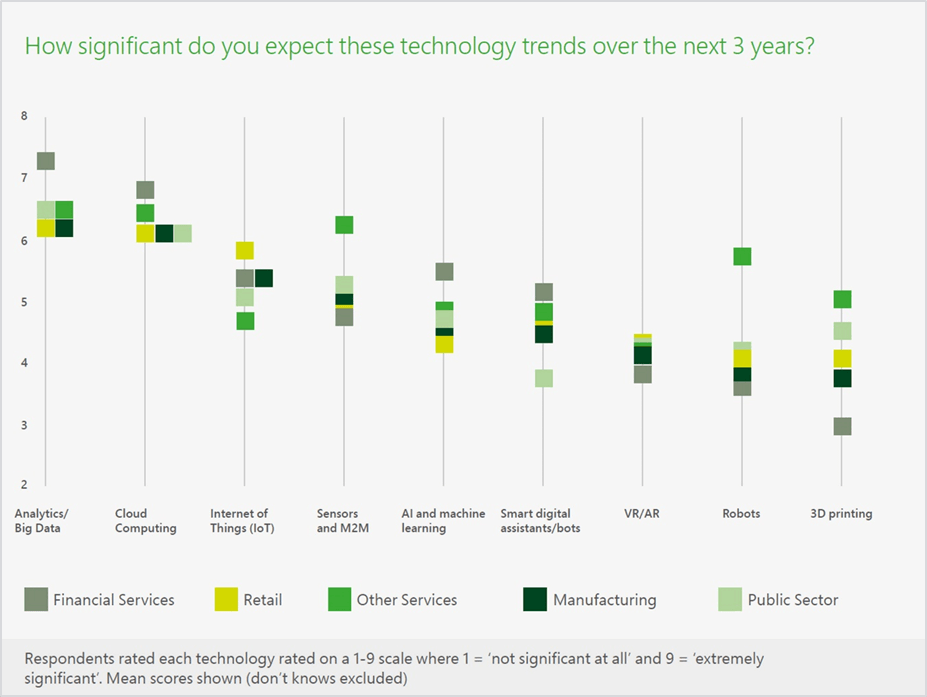
This heightened sense of anxiety has led to businesses acknowledging the need to adapt to modern solutions, and more importantly, respond to client requirements.
Therefore, companies are now looking to move beyond their cloud conundrum, and look to the most renowned cloud providers…
AWS vs Azure.
When you look at the comparative general revenue of the two cloud providers, Amazon is a comfortable industry leader.
AWS has more than 4x the revenue of Azure, and started in the ‘cloud game’ a few years earlier.
FREE GUIDE
Discover why Azure is the Fastest Growing Cloud Platform
Get your free guide to embracing hybrid cloud
However, as the following graph shows, Microsoft is very quickly closing the gap with regards to applications workloads, specifically in regards to IaaS. This position is built upon their heritage of working with enterprise platforms.
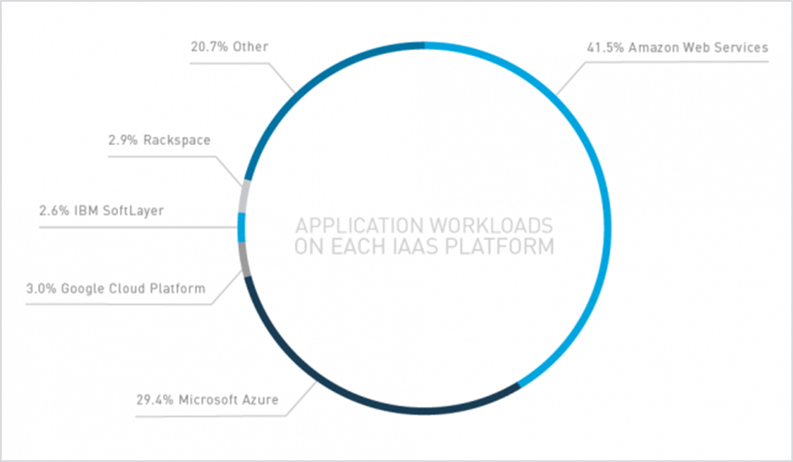
If you look at the smaller players in this market, you will see that the previous giants of technology: IBM, Oracle etc. have been relegated to small players in this field.
What will be interesting over the next few years is whether they make a resurgence, or whether we continue to see scenarios whereby IBM tools are being migrated to Microsoft Azure.
Equally, it is worthwhile noting, that while this article chooses to focus on Azure vs Amazon, there is a big school of thought that Google [Cloud Platform] is the third leg of the cloud race.
If you are looking for such, check out this guide of AWS vs Azure vs Google.
In order to compare the two cloud providers, we thought it beneficial to understand the main underbelly of what these organisations offer.
As such, here are your essentials:
Firstly, despite the means in which they name their various products, the core components of Microsoft Azure and AWS’s public cloud offerings are:
With a more popular breakdown of:
However, what is becoming more important is the selection of IaaS, PaaS & SaaS.
These three solutions are becoming ever more prioritised by cloud providers, with the future capabilities they can hold. Bolstered with legacy organisations already having vast requirements that can transferred to these solutions.
As you can see below, all three segments of this strategy are growing at good rates, with the future demonstrating a great priority on IaaS.
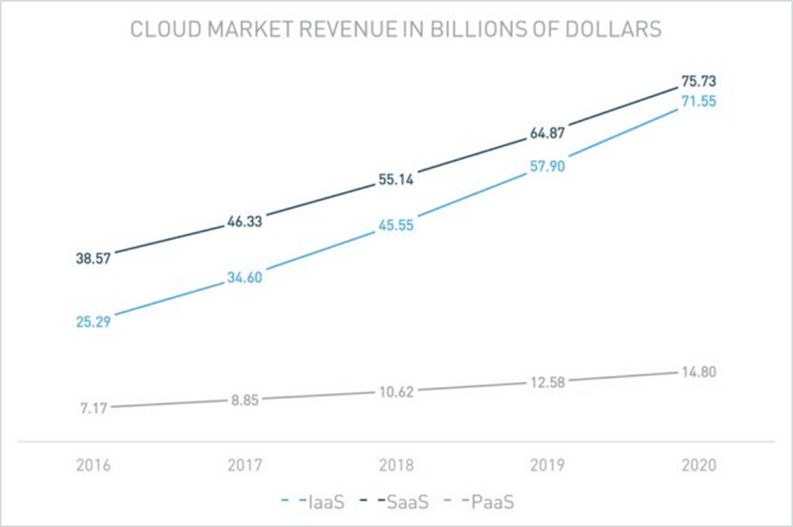
IaaS has, and will continue to be an advantage to Azure, with Microsoft gaining enormous ground in this area. Even more so, with the introduction of Azure stack [more details below], they are well suited to designing around services that can benefit from hybrid cloud.
While there are certain areas of cloud computing that are quite competitive, this diagram shows just how far forward the duo of AWS and Azure are.
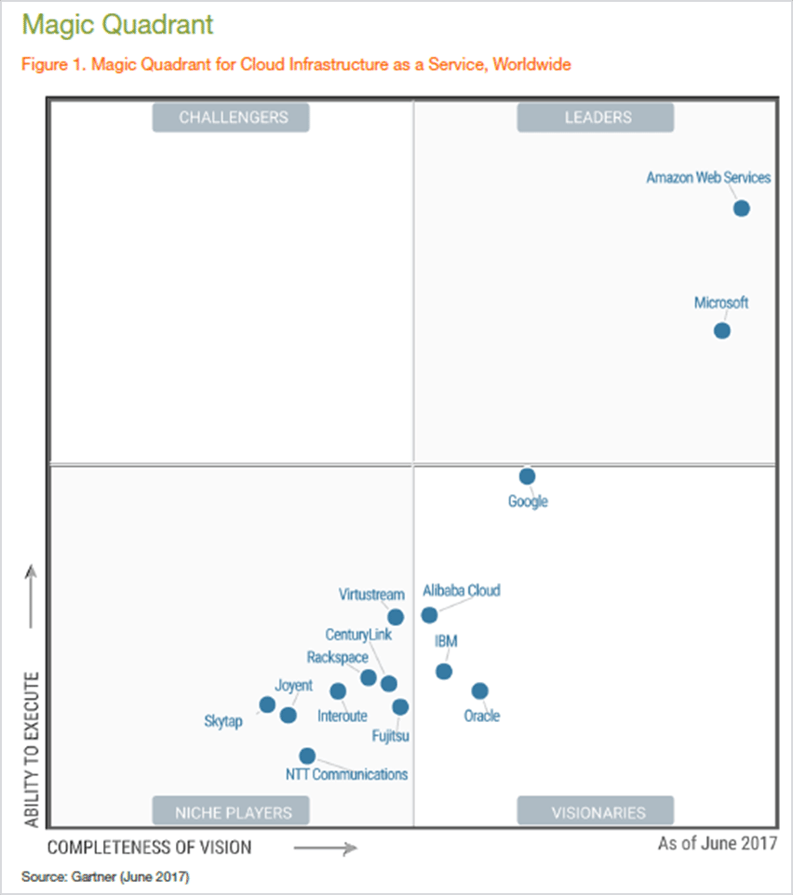
AWS vs Azure in Action: 5 Comparable Points
Despite the plethora of differences between the two platforms, it is handy to understand the more comparable point between them.
The five areas of comparison are as follows:
Looking at the various features that AWS and Azure both have, and are continuing to build, it is very much a case of who seems to be responding quickest to market demands.
Depending on who you ask, some will argue that while AWS mainly covers the large array of resources that Microsoft Azure offers, however, they don’t seem to quite have the depth - but this is easily contestable.
Hence the importance of understanding the business context of a project, whereby you may find that the resources that will bring the most benefits - whether that be scale or potential revenue, are far better suited to Azure’s offering for example.
Equally, you have the opportunity to take a sample application, and cheaply test the output of both providers.
As can be seen from this graph, there is a large spread of options available for ‘as a service’ solutions. Whereby, many companies are currently experimenting.
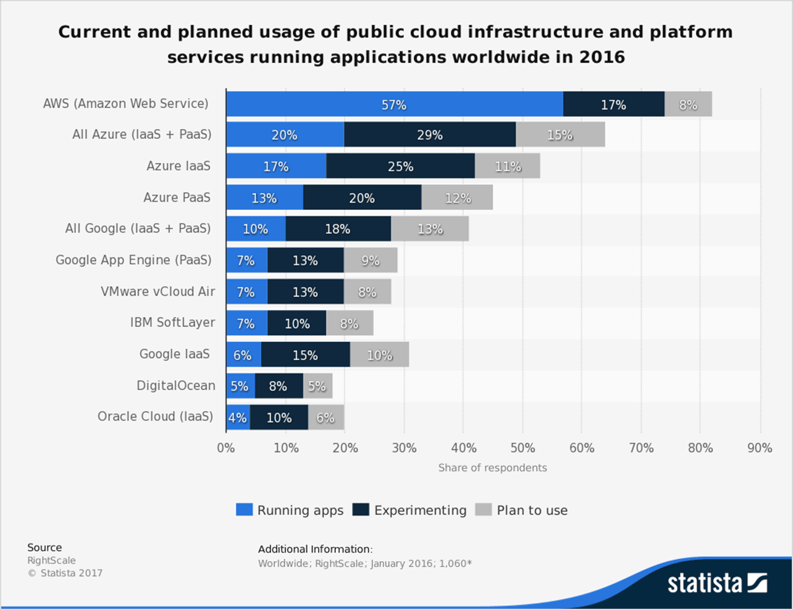
As a side note, despite the good levels of support AWS provide, the complex way in which they deploy various different features means that you are mostly likely going to need a partner to support the additional legwork.
This is important to take into consideration, as you should expect to incur further costs.
While the ability to test different providers, as noted above, is an option, you might equally believe that the best way forward as an organisation is to choose what you believe to be the best horse.
This type of backing is more favourable if you have an existing set of features within your organisation. Take financial service for example, they have a large record of employing Microsoft productivity management tools [like Microsoft 365].
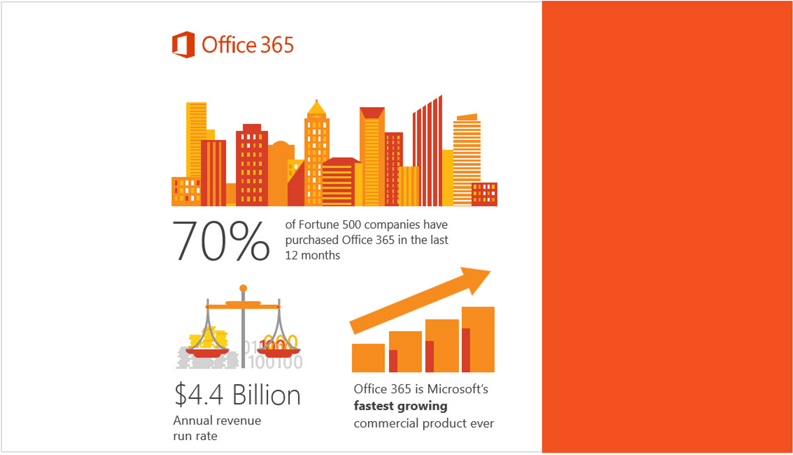
Equally, they tend to use Microsoft Azure Active Directory, and as such it makes more sense to work with tools that nicely integrate with your current solutions.
Now:
While you may concede that there are certain features that you might not be getting from a competitor - you are on the path of least resistance.
Having gone through comparing AWS vs Azure from a general features perspective, let’s move on to discussing the real offering that each company provides.
Kicking off this section we have the AWS product suite.
Like all cloud providers, Amazon uses different codes and names to breakdown their cloud products. With that said, they fall into the following categories, such as:
However, if you are looking for the entire list of convoluted name, here you go:

What you will notice here, and for Azure, is that these cloud providers are both tirelessly working to cover all new areas of cloud computing interactions.
Whether that be through AI or machine learning, they are both actively trying to reach new markets.
As, in their mind, if they can get customers comfortable with at least one of their cloud solutions, there is a good opportunity of expanded use.
Moving on to Microsoft Azure, they are equally working to build an end to end platform that can deliver to the needs of its customers.
However, what you can see with Azure, as compare to AWS, is that their heritage of enterprise computing has very much benefited them with regards to building modern, desired solutions.
This includes creating Enterprise Agreements [EA].
These enable large organisations to earn benefits from committing usage to Azure. Such benefits include flexible billing and more competitive pricing.
You can see below a catalogue of the various Azure services.
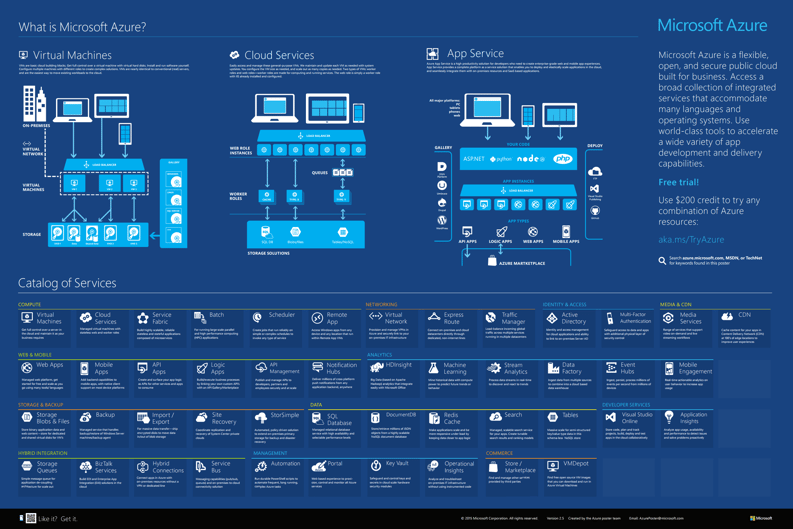
It is interesting to see how both AWS and Azure are continually modifying their existing products, sometimes through acquisitions, or through streamlining products.
With this in mind you will have to realise that your cloud strategy has to adopt and respond to new products, and the needs of users.
Despite the wealth of noise around cloud computing, there does appear to be a matter that looks to heavily separate the two providers [in the current climate].
I do say 'current climate', because in this field the realities do change on a very frequent basis. Remember that it wasn’t too long ago [in the grand scheme of technology], that Amazon only sold books.
With that said, the matter of hybrid cloud computing has become an incredibly important part of choosing the right technology partner.
If you look at the concerns held over data protection, and the varying policies, there is a strong belief in certain sectors, financial services specifically, that there needs to be a consideration for private, on-premises data centres.
However, while this is a very plausible argument for certain subsets of data, they are equally looking to embrace the scalability and benefits that the cloud offers.
As such, if you look at the offering held by the two cloud providers, Microsoft Azure seems to hold a far stronger hand.
Firstly, whereby Microsoft has a strong understanding of the need to use tried and tested patterns – hence the newly released Microsoft Azure stack.
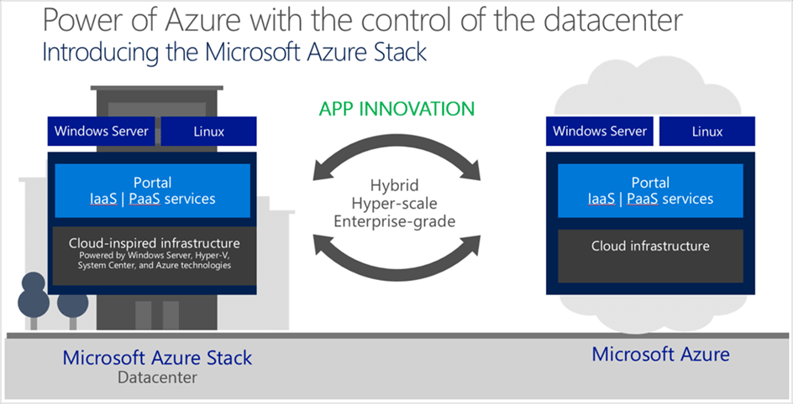
The stack is the perfect accompaniment for those in need of private data centres. In addition, should an organisation later choose to migrate them to the cloud, it can be done with ease.
Equally, there are several organisations that will produce for the Azure stack, thus removing some of the fears of being reliant on the hardware of a specific organisation.
Secondly, you can look at the various other tools that Microsoft has made available, these include Hybrid SQL Server and Azure StorSimple.
Now granted, AWS has recently come to the realisation that hybrid cloud is far more suitable for certain organisations. Especially those that are so large, that their long-term strategy means that in order to deal with an unbelievably large set of processes, they must first embrace a hybrid approach.
But the problem is also that Amazon has spent the last few years maintaining a stance against the need for private solutions.
Preaching the future was ‘all cloud, all the way forward’.
Which, while this has enabled them to take such a stronghold in their industry, they have alienated some organisations.
When a large financial organisations had exhausted their data centre capacity, they made the decision to use public cloud services [Microsoft Azure]. As part of their strategy to address the capacity challenge, but also to benefit from the features that cloud brings to their business.
This hybrid model game them the opportunity to benefit from all the security and scalability that public cloud offers. Read more →
Looking into the future, it is hard to see any form of complete movement to the cloud, as there will still be organisations that have a strong need for hybrid solutions.
Whereby it does seem that Microsoft Azure has the advantage.
FREE GUIDE
Supercharge Business Critical Applications in Azure
Start your journey to hybrid cloud with our free guide
Equally, with their previous stronghold in applications that required an on-premises solution, they are very knowledgeable on the various struggles that organisations have.
Such that in our experience, we have found many business critical applications that are carefully maintained through the inclusive knowledge of a few.
Whereby, organisations are looking to scale these going forward, and even commoditise platforms, and as such the need to consider these within your digital transformation strategy is so important.
Moving beyond the matter of hybrid cloud – ones needs to firstly consider a multi-cloud strategy.
This type of consideration is really important when you consider the vast segments and priorities of different departments within organisations.
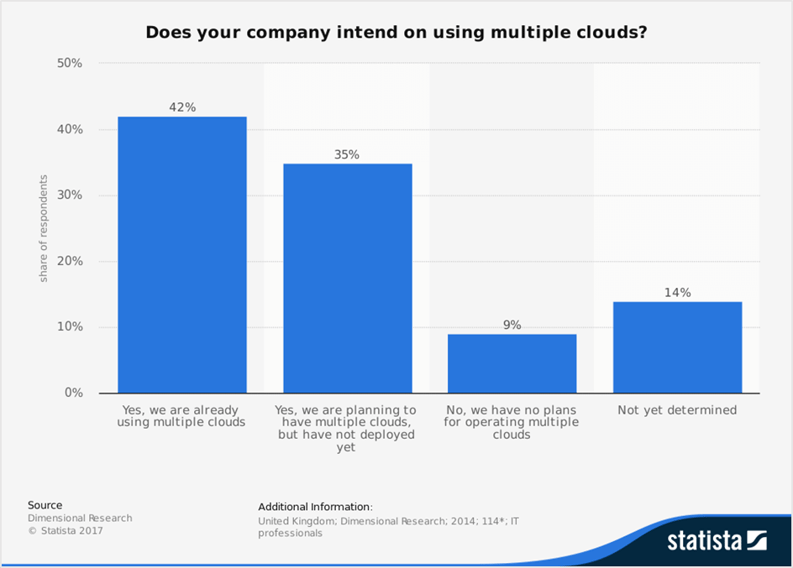
Whereby you will frequently find that some departments have achieved so much success and personalisation with one cloud provider, that an executive order to ‘move everything to Cloud X’ can be counterproductive.
Hence the need to conduct in-depth audits before you start, in order to make suitable decisions.
Want to know the best part?
Both Azure and AWS are very much equipped to handle multi-cloud strategies, and they heavily promote organisations to compare the two at a small scale, and then learn from that.
The requirements for business of the future are going to change. They will need new toolsets, new processes, new capabilities, and therefore it is important that the IT arm of an organisations gives the room for such areas to expand.
From a development perspective, both Azure and AWS are both very equipped to deal with the high pressure demands of architects.
However, what tends to be the case is that each platform has its strengths and weaknesses, and therefore, as noted, it is just a case of measuring importance.
For example Azure has features like Service Fabric & Container Services that are great for creating, deploying and scaling applications. Here’s a great diagram showing with various patterns and practices:
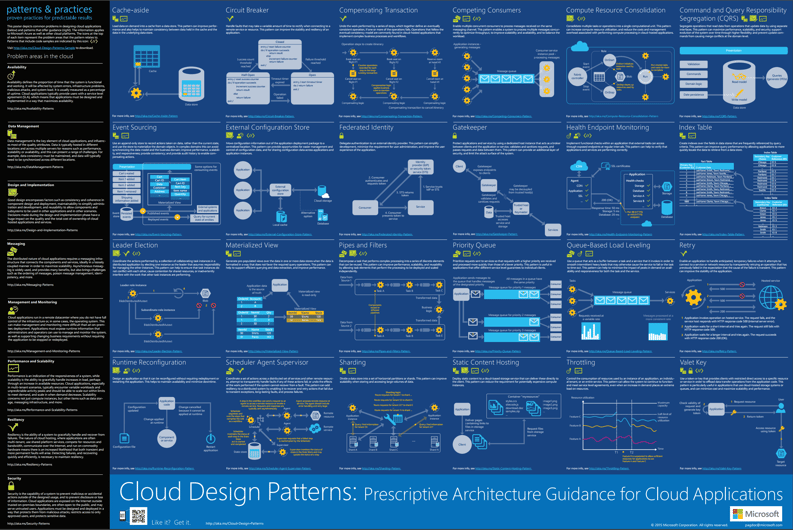
This has led Microsoft to become a huge market player with regards to IaaS.
In addition, AWS does not have as many options on the app hosting side. But this might not be highly prioritised to their strategy.
With that said, AWS has achieved a great deal of its market lead through the easy ability for businesses of all sizes to migrate huge quantities of data to the cloud, which while more rudimentary, is incredibly valuable.
As part of building a modern toolset, developers are looking for seamless solution integration, removing the need for vast reconfiguration.
Whereby, if you consider the amount of projects taking place across departments, developers avoid altering internal processes or daily practices.
Rightly, they just want everything to work.
From that stance, AWS has showed willingness to embrace current ecosystems and integrate with most providers - even Microsoft. Through doing so, they have created a beneficial differentiator from competitors, while building a network of recognised partners.
In contrast, only recently has Microsoft’s demonstrated a new found admiration of Citrix, Linux, R, Python etc. Not too long ago they were criticized for such closed platforms. Which, when you consider how important these languages and platforms are, was a big misstep.

Fortunately, they are [as you would expect] well integrated with Visual Studio and Azure AD. So, when you consider that most large organisations use either of these or Office 365 in some form – there is a strong case to partner with them.
Going forwards, it seems inevitable that both providers will continue to build strong partnership. This should help reduce barriers to potential customers.
As for the present, it is worthwhile checking their limitations against your current infrastructure demands:
Note: this includes the various support for Hadoop clusters: AWS [elastic map reduce] and Azure [HDInsight].
When comparing the performance of AWS & Azure, you have quite a few different aspects to consider, firstly you have coverage.
In order to ascertain how you will experience their platforms globally, here is an indication of their data centre capabilities.


As you can see, there is a fairly equal breadth and depth with regards to their locations.
Granted, quantity of datacentres doesn’t include important factors like quality and security. However, for companies that require global access to data, being closer to your data is helpful. Especially in regions without datacentres.
Equally, it offers the ability to have more failover countries.
With that said, in recent years both these, and other providers have all been the subject of global outages. As such, you must consider all options when considering your hybrid/ multi cloud strategy.
There will always be individuals who strongly claim that one provider is significantly superior to another from a performance perspective, however the division isn’t quite what it seems.
In reality, both AWS and Azure are very much toe-to-toe.
However, in scenarios that require multiple steps - such as an Azure IoT model, you need a partner that provides all of the tools needed.
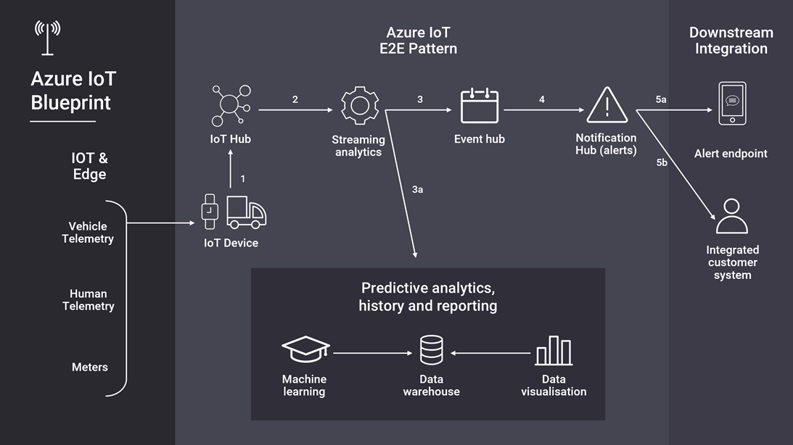
Should you choose to slice and dice that with third party applications, latency kicks in.
In addition, you will have to consider the role and level to which each provider meets your database [DaaS] needs.
A global insurance firm were looking to provide increased resiliency for a number of Line of Business (LoB) applications through the use of cloud services.
In order to gain business support, a successful proof of concept was required demonstrating the Cloud’s suitability for this use case. Read more →
Having established the various features and opinions around Azure and AWS, we are now moving onto implementation.
While these two leaders could attempt to hold the market to ransom with large costs, the opposite has actually happened. They have been forced to heavily drive down their prices and continue to use their scale to achieve low costs.
This has been enormously beneficial both for customers, and the embracing of cloud computing.
In addition to the general reduction in costs, both providers have elected to exploit the more modern means of PAYG pricing. But rather than just doing such on a monthly basis, they do so on an hourly basis.
Even more impressive, Microsoft Azure actually does so based off minute-by-minute usage.
What’s the bottom line?
This accurate reflection has been a big bonus for certain cloud providers. But rest assured, we are seeing these types of benefits being continually levelled off in view of their constant head-to-head competition.
To be more specific, see the breakdown, comparing of AWS vs Azures pricing:
Beginning with Amazon Web Services, they nicely articulate the various costs related to different cloud offerings - from Small business through to Enterprise.
Despite often exaggeration, pricing really is one the valuable advantages of cloud computing, whereby deliberating the existence and renewing of data centres is no longer the issue it once was.
You can simply scale and drawback as and when it suites business objectives.
Their defined pricing structure, based on storage, is helpful with regards to pure data migration.
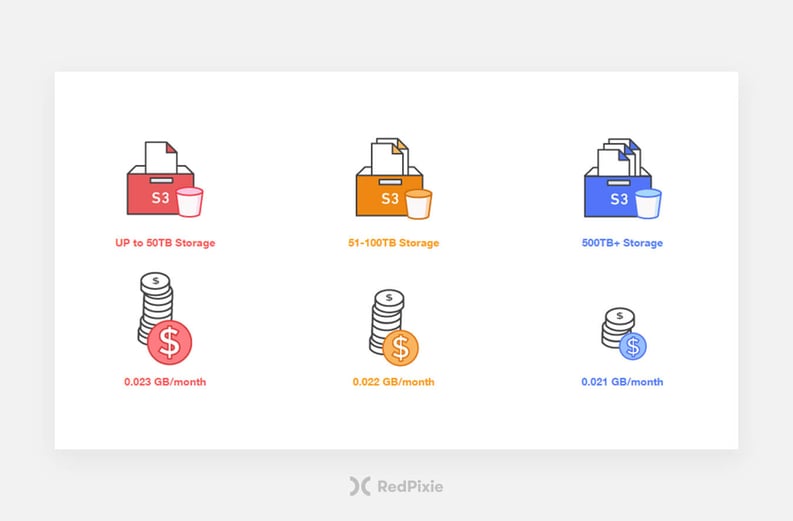
In addition to the generic pricing, here are some helpful resources [especially the AWS pricing calculator]:
As a point worth noting, it can be argued that AWS’s pricing structure is somewhat too complicated for the average infrastructure manager to fully comprehend, therefore third parties are often need in order to fully support.
Which, as an additional cost, is worth considering.
Moving onto Azure pricing, you will find there to also be many compelling points.
However, it is interesting that Azure, as is the case with AWS, ensure that certain parts of their platforms are especially competitively priced, sometimes beyond what we be considered economically logically.
This forward-thinking activity is willing to take the short-term drop in profits, for long-term market share.
As example, Microsoft Azure demonstrate big ambitions of moving services to the cloud. Whereby they view this field as an areas that will continue to grow.
In view of such, here are links that will hopefully enable you to make a comprehensive decision.
You can see that both Azure and AWS price calculator offers the ability to estimate TCO. This enables an approximate understanding of costings and ROI over a 6 months / 1 year / 18-month basis.
Companies that operate large scale legacy environments will find this especially valuable.
As such, you can answer traditional questions like:
Hopefully this provides an understanding on Azure vs AWS pricing.
Secondly, when considering ‘getting started’, you have to compare implementation.
Contrary to what you might think, this normally begins within some form of experimenting, rather than large scale projects.
Whereby, as the graph below demonstrates, a great deal of the interaction with the various providers is done in an introductory manner. Quite noteworthy, this research, along with others, shows more companies experimenting with Azure, than any other cloud provider.
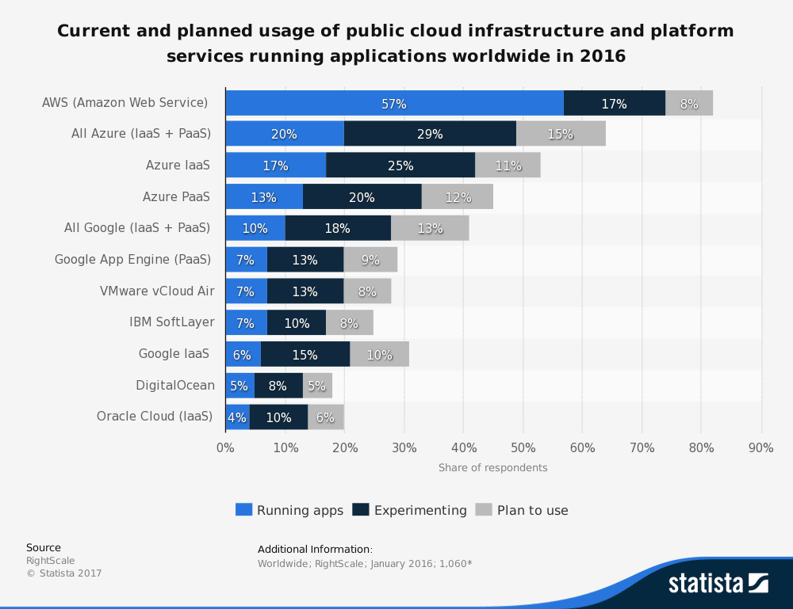
Of course, this differs from product to product. Though in general, there has been a moment towards small comparative testing.
Later in the project, this makes the process of implementation that much easier.
More specifically, this is how Azure and AWS view implementation:
As touted, AWS provide a simplistic platform to begin using their services.
You can see how their categorisation helps provide sample code – whether that be for an iOS app, or writing in PHP.
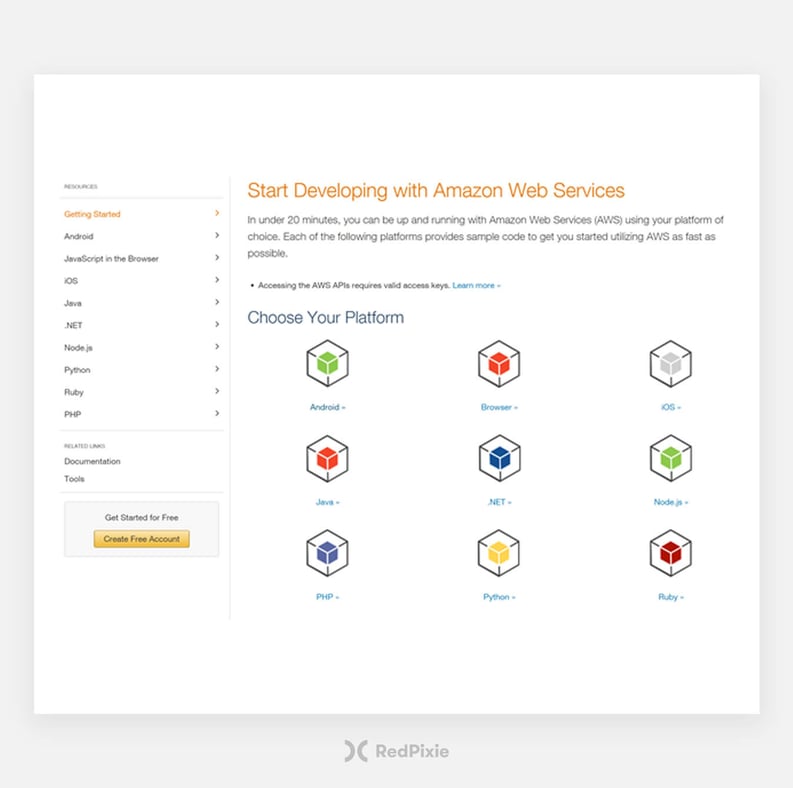
You’ll notice that Amazon claim to get your ‘up and running’ within 20 minutes. Despite this slightly ambitious claim, there is a clear roadmap to getting your code/ programmes into the cloud, and running it in 3 data centres.
All in the blink of an eye.
Unearthing the benefits of Azure is almost an easier journey.
Fortunately, Microsoft make the process understandable for all parties, whereby they provider in-depth start guides for both developers and operations.
FREE GUIDE
A Helping Hand for Hybrid Integration
Learn how to choose the perfect cloud partner
More importantly, they can easily be forwarded to the relevant department if you need to check suitability.
Looking to the next few years, we see these processes become simpler, with more templates, standardisation and support around trials.
Also, with companies already being convinced of the various cloud virtues, and the benefits that are felt, buy-in from leadership should be easier.
The quality of cloud security has been one of its biggest scepticisms in recent years. However, this isn’t entirely unjustified, whereby large, well-publicised ‘data breaches’ have made even the largest organisations feel uneasy.
Fortunately, with their significant backing, both AWS & Azure has the finances to plough more money into data security that their contemporise.
As such, if we look towards Microsoft Azure, they in-fact view their degree of certification as a differentiator. Whereby they claim to have more ‘than any other cloud provider’.
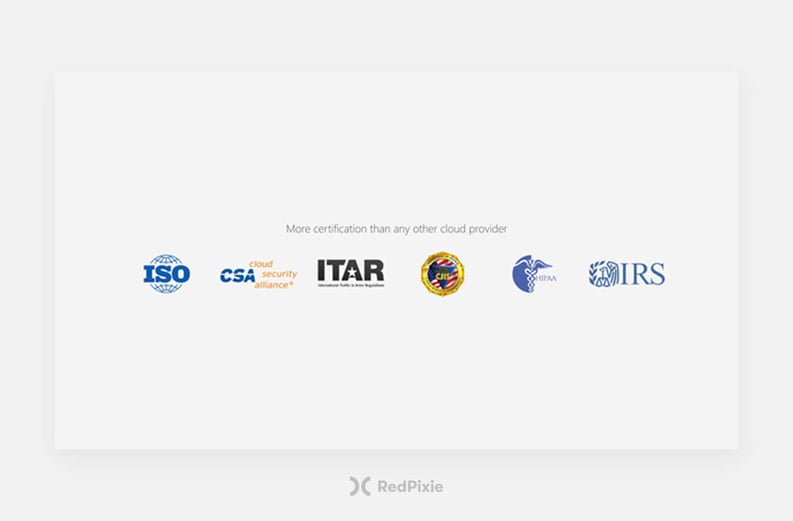
By no means does AWS fail to comply with any regulation.
In fact, they are also suitably geared to provide a strong, compliant, and secure platform. This involves working with global standards and policy agencies. They also have to cater to evolving industry specific considerations.
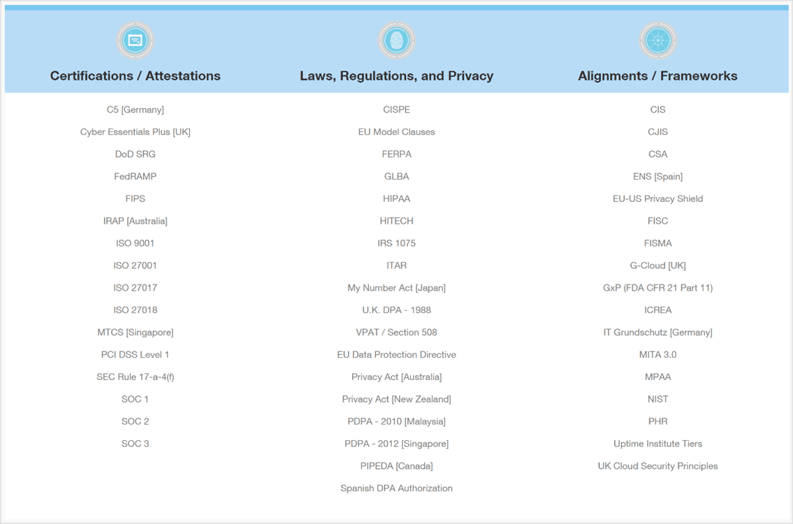
In current times, it does appear that Microsoft’s wealth of experience within large enterprise customers has led to them to be slightly further forward with regards to compliance.
Despite their standings, they will be also be judged by the manner in which they respond to future policy changes. If you look at the situations whereby large technologist have been ordered to provide client data to authorities, their response has huge waves in public opinions.
Hence our previous note on the compromises you afford when picking your IT partner.
So, therefore you go. That’s 5 comparable points between AWS and Microsoft Azure:
While you may arrive at this section hoping for a clear verdict on which cloud provider is the strongest, in reality, the decision is very much reliant on the target outcome you are looking to achieve.
With that said, there are some clear strengths of each provider, hopefully this table makes that job just a slightly bit easier:
|
Element |
Microsoft Azure |
AWS |
|
Features |
Has a deeper range of features for selective categories - such as PaaS and IaaS. |
AWS has the widest range of features. But they require more management than others. |
|
Hybrid Cloud |
Microsoft has a strong heritage with hybrid environments. They look to leads with their Azure Stack. |
Having previous held a ‘cloud-first’ mentality. They are backtracking and slowly responding. |
|
Developers |
There is access to many more global data-centres to support scalable infrastructure. |
Amazon has better willingness to integrate with third-parties. |
|
Getting Started |
Azure is the most experimented provider at the moment, offering beneficial free trials. |
They have a very competitive/ always decreasing pricing model. |
|
Compliance |
Proclaims to have more certifications that ‘any other provider.’ |
Has a strong relationship with global agencies. Lacks enterprise experience. |
As you can see with the table above, and the breakdown of the different topics, this isn’t a simple distinction of first and second.
Therefore, it is essential to consider all the elements. More than just compare AWS & Azure theoretically, they both offer free trials, so you can easily give them both a chance.
In doing so, you might find a distinguishing resource that despite not being mentioned here, provides enormous value to yourself. Whereby if it saves you vast amounts of time, enables a clear business case.
We’d love to hear your thoughts on the various platforms, and who you think leads the fight of Microsoft Azure vs AWS.
Who knows where the market will go, and who will succeed.
The IoT market within finance is expected to triple by 2020.
However, with the rising popularity of ... >
Eagle House, 167 City Road,
London, EC1V 1NR